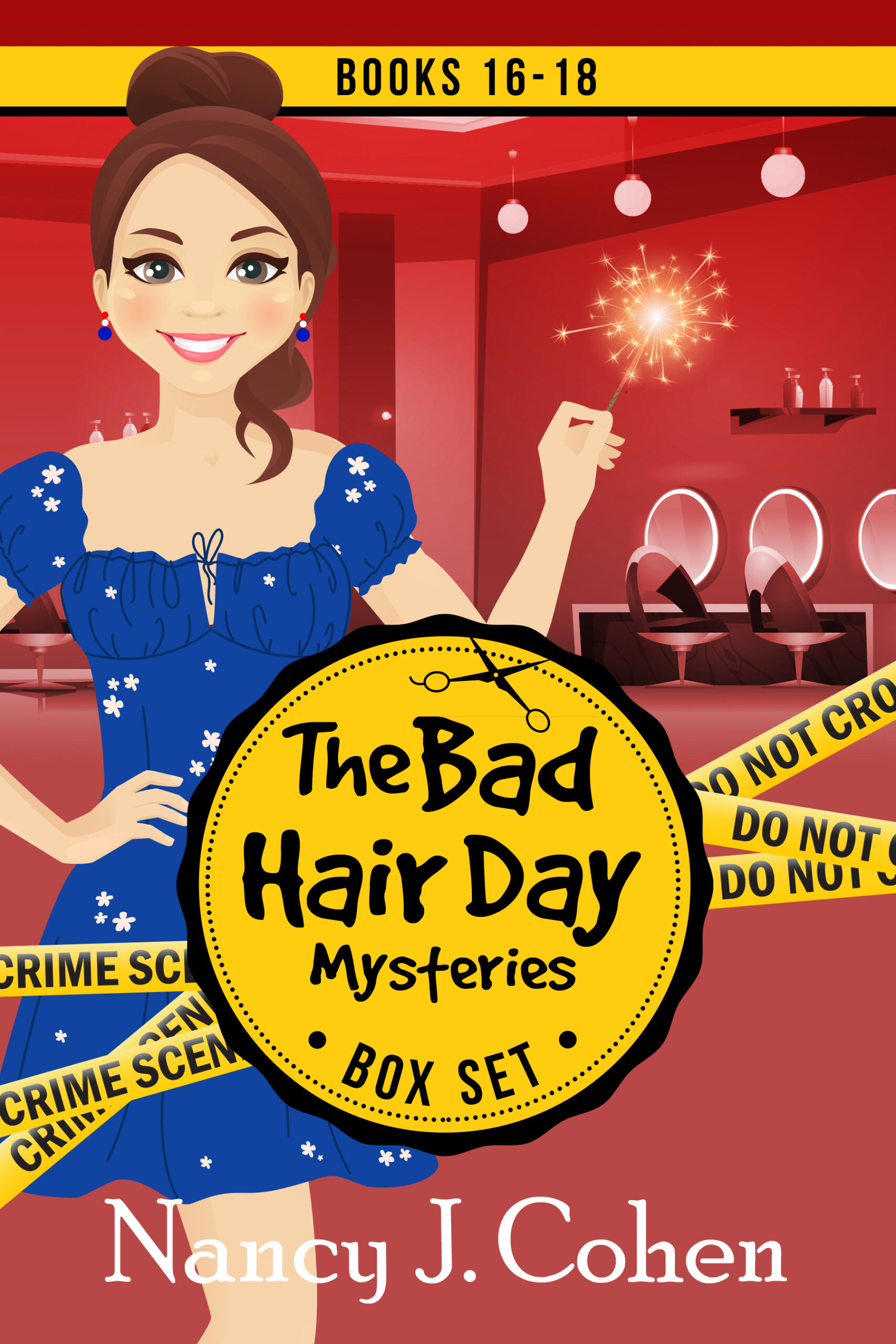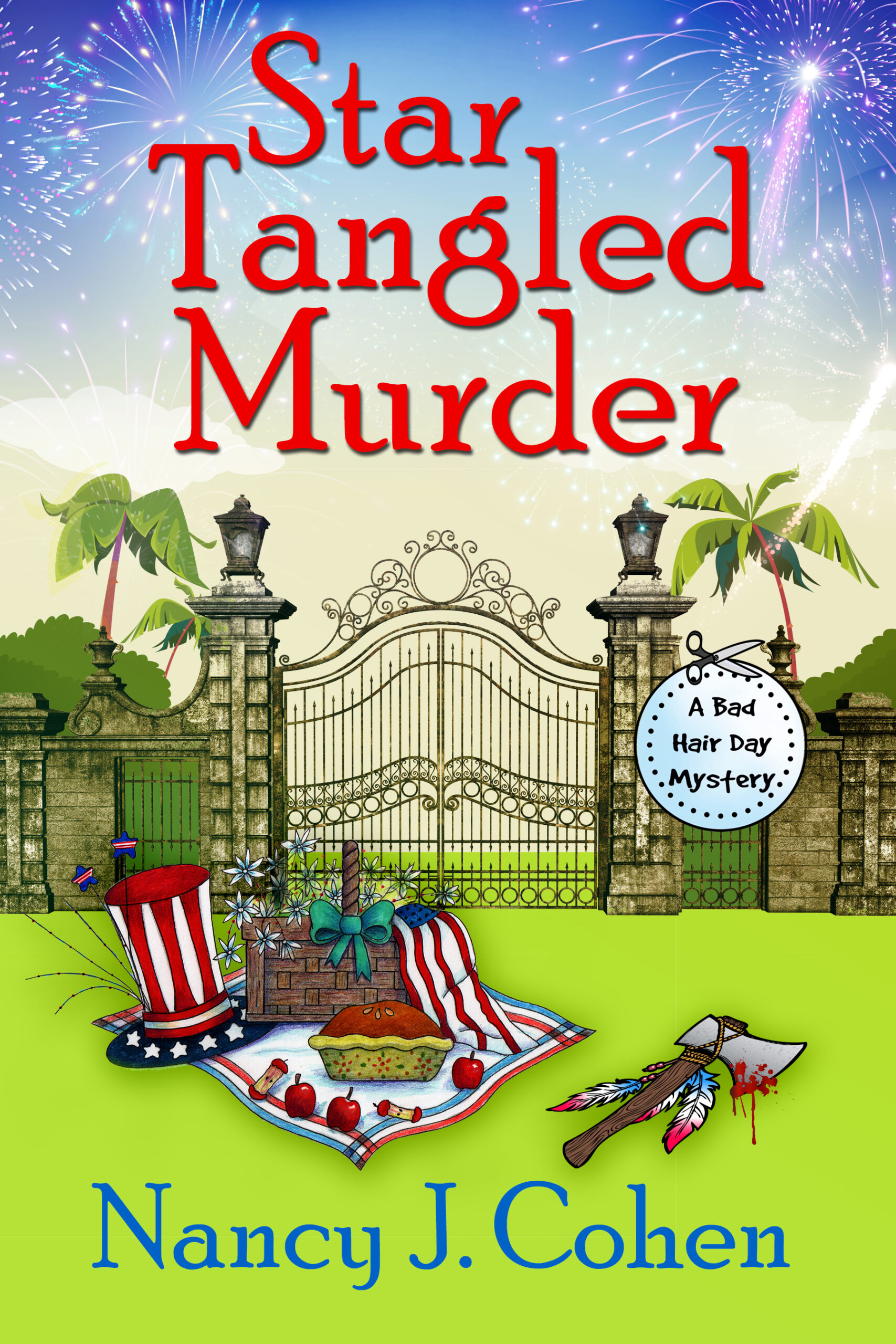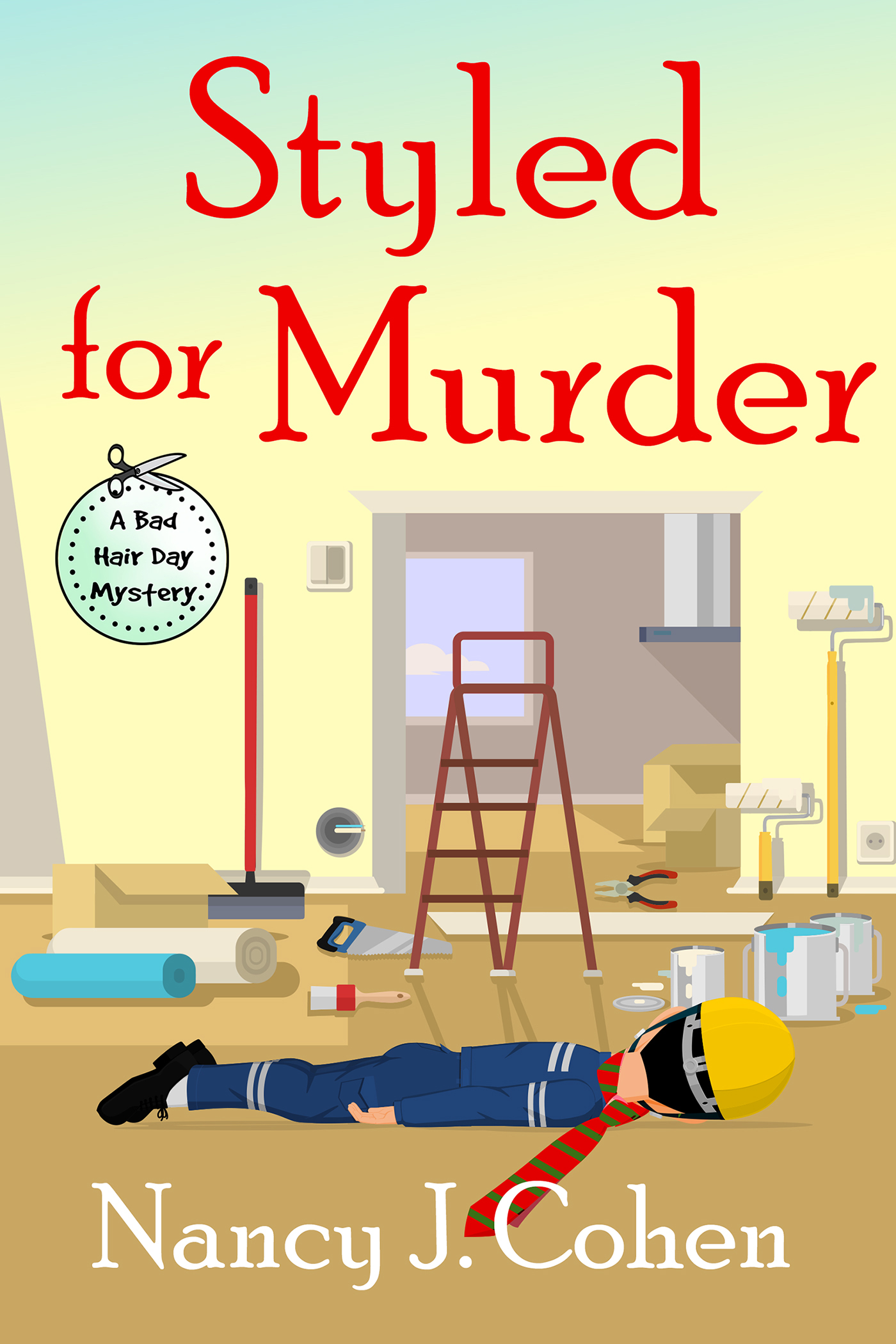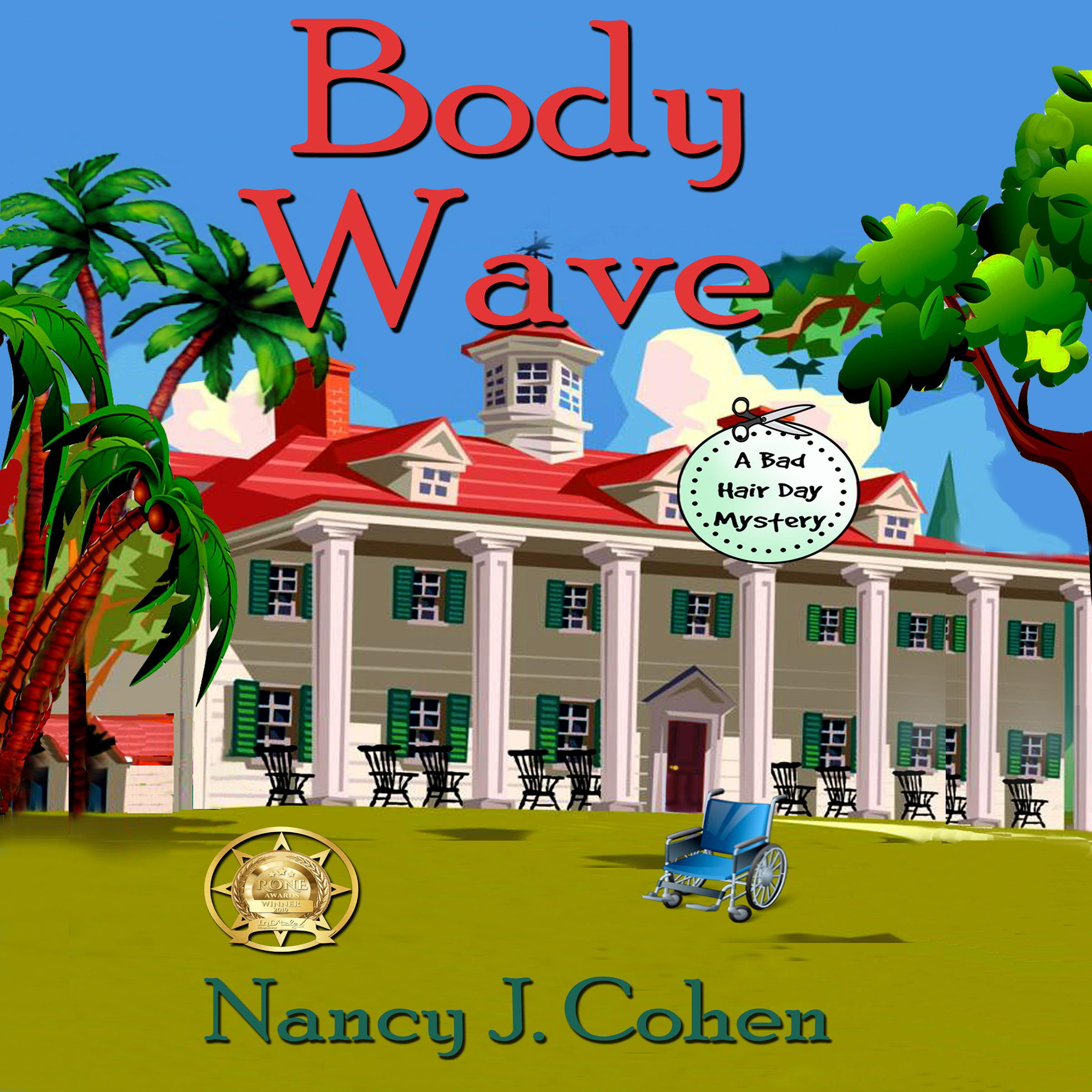I am excited to announce the release of The Bad Hair Day Mysteries Box Set Volume Four: Books 10-12

Copyright © 2021 by Nancy J. Cohen
Published by Orange Grove Press
Digital ISBN: 978-1-952886-19-5
Cover Design by The Killion Group, Inc.
Digital Layout by Formatting4u.com
In this trio of adventures, hairstylist sleuth Marla Vail discovers the matron of honor stabbed to death under the cake table at her friend Jill’s wedding. She gets married and moves into a new house with a dead body next door. Her honeymoon at a dude ranch turns dangerous when ghosts from the past stir up more trouble than the horses.
SHEAR MURDER
Hairstylist Marla Shore is weeks away from becoming a bride when she walks down the aisle as a bridesmaid at her friend Jill’s ceremony. Things take a turn for the worse when the matron of honor ends up dead under the cake table. Lots of folks aren’t sorry to see Torrie go, especially since the bride’s sister knew their deepest secrets. But when suspicion falls upon Jill, Marla wonders if her dear friend is truly innocent. She’d better untangle the snarl of suspects and iron out the clues before the killer highlights her as the next victim.
“Shear Murder is another stellar outing in Nancy J. Cohen’s Bad Hair Day mystery series.” Lorna Barrett, bestselling author of the Booktown Mysteries
HANGING BY A HAIR
Marla’s joyous move to a new house with her detective husband, Dalton, is marred by their next-door neighbor who erects an illegal fence between their properties. When Dalton reminds the man of local permitting laws, tempers flare—and worse, the neighbor is found dead the following day. Before her husband’s investigation can begin, he is removed from the case due to a conflict of interest. Now it’s up to Marla to clear his name and make the neighborhood safe again.
Suspense Magazine “Best of 2014” Cozy Mystery
“Marla is short for marvelous. If you like your mysteries ‘cozy,’ you’re going to enjoy every minute you spend with her!” Joanna Campbell Slan, bestselling author of the Kiki Lowenstein Mysteries
PERIL BY PONYTAIL
Marla and Dalton’s honeymoon at an Arizona dude ranch veers from dangerous to downright deadly faster than a horse headed to the corral. With her husband’s uncle—the resort owner—on the suspect list for murder, Marla races to prove his innocence. She hopes her blind trust isn’t misplaced, especially when she learns Uncle Ray has secrets he’d rather keep buried. With her new family in jeopardy, she’d better saddle up her sleuthing skills to figure out who’s adding to the spirits at a nearby ghost town before someone she loves gets hurt.
Third Place Winner in the Arizona Literary Awards
“Peril by Ponytail ropes in the reader in Nancy J. Cohen’s captivating new tale, which deftly braids together deadly secrets, long hidden resentments, and romance on the range.” Ellen Byerrum, bestselling author of the Crime of Fashion Mysteries
Order Now
Amazon – https://www.amazon.com/dp/B09BJY9L7X
Apple – http://books.apple.com/us/book/id1579075191
BN – https://bit.ly/3yf1Xh6
Kobo – https://bit.ly/3im425e
Books2Read: https://books2read.com/BadHairDayBoxSetFour






















































